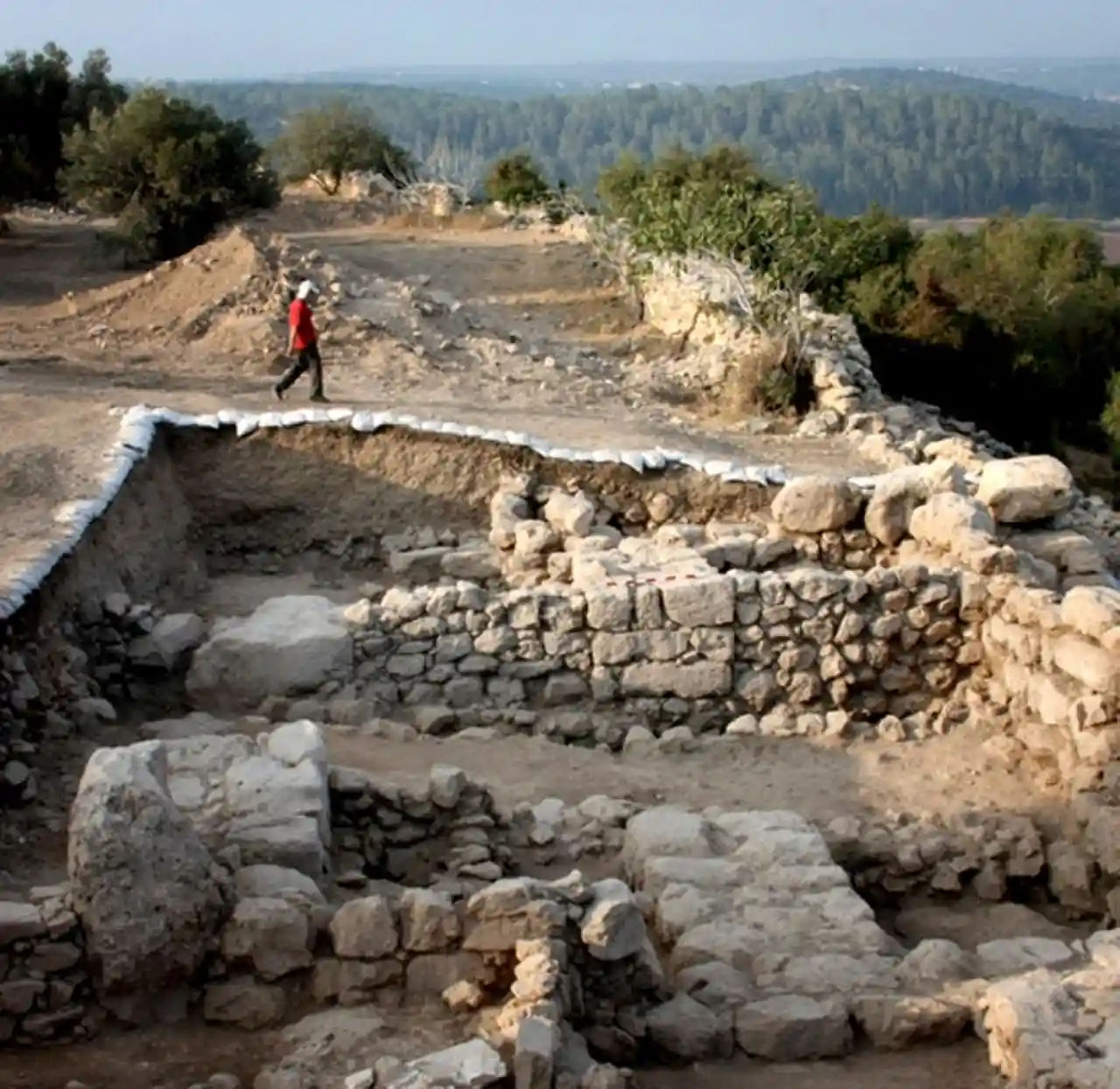 Khirbet Qeiyafa - Credit: Wikimedia Commons
Khirbet Qeiyafa - Credit: Wikimedia Commons
 Khirbet Qeiyafa - Credit: Wikimedia Commons
Khirbet Qeiyafa - Credit: Wikimedia Commons
Khirbet Qeiyafa (), also known as Elah Fortress and in Hebrew as Horbat Qayafa (), is the site of an ancient fortress city overlooking the Elah Valley and dated to the first half of the 10th century BCE. The ruins of the fortress were uncovered in 2007, near the Israeli city of Beit Shemesh, from Jerusalem. It covers nearly and is encircled by a 700-meter-long (2,300 ft) city wall constructed of field stones, some weighing up to eight tons. Excavations at site continued in subsequent years.Israel Antiquities Authority, Excavators and Excavations Permit for Year 2008, Survey Permit # G-39; Excavators and Excavations Permit for Year 2009, Survey Permit # G-14; Excavators and Excavations Permit for Year 2010, Survey Permit # G-27 A number of archaeologists, mainly the two excavators, Yosef Garfinkel and Saar Ganor, have claimed that it might be one of two biblical cities, either Sha'arayim, whose name they interpret as "Two Gates", because of the two gates discovered on the site, or Neta'im; and that the large structure at the center is an administrative building dating to the reign of King David, where he might have lodged at some point. This is based on their conclusions that the site dates to the early Iron IIA, ca. 1025–975 BCE, a range which includes the biblical date for the biblical Kingdom of David. Others suggest it might represent either a North Israelite, Philistine, or Canaanite fortress, a claim rejected by the archaeological team that excavated the site.Fridman, Julia. Crying King David: Are the ruins found in Israel really his palace? , at Haaretz, 26 August 2013. "Not all agree that the ruins found in Khirbet Qeiyafa are of the biblical town Shaarayim, let alone the palace of ancient Israel's most famous king." The team's conclusion that Khirbet Qeiyafa was a fortress of King David has been criticised by some scholars. Garfinkel (2017) changed the chronology of Khirbet Qeiyafa to ca. 1000–975 BCE.Garfinkel, Yosef, (2017). "The Iron Age City of Khirbet Qeiyafa", in: The Shephelah during the Iron Age, Penn State University Press, p. 115: "Initially, only a few dates were published, but we now have 27 measurements, all made on short-lived samples (mainly olive pits) deriving from a single occupation layer that existed for 20 or 30 years at most. Khirbet Qeiyafa was built around 1000 BCE and was destroyed around 980 or 970 BCE (Garfinkel et al. 2012; Garfinkel et al. 2015)."Garfinkel, Yosef, (2023). "Early City Planning in the Kingdom of Judah: Khirbet Qeiyafa, Beth Shemesh 4, Tell en-Naṣbeh, Khirbet ed-Dawwara, and Lachish V", in: Jerusalem Journal of Archaeology, Volume 4, The Hebrew University of Jerusalem, p. 89: "Carbon-14 dates assign the fortified city to the first quarter of the 10th century BCE [...]" Read more on Wikipedia
Source: en.wikipedia.org